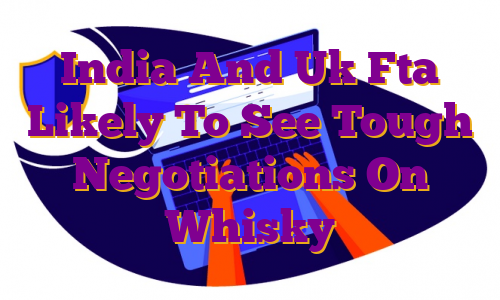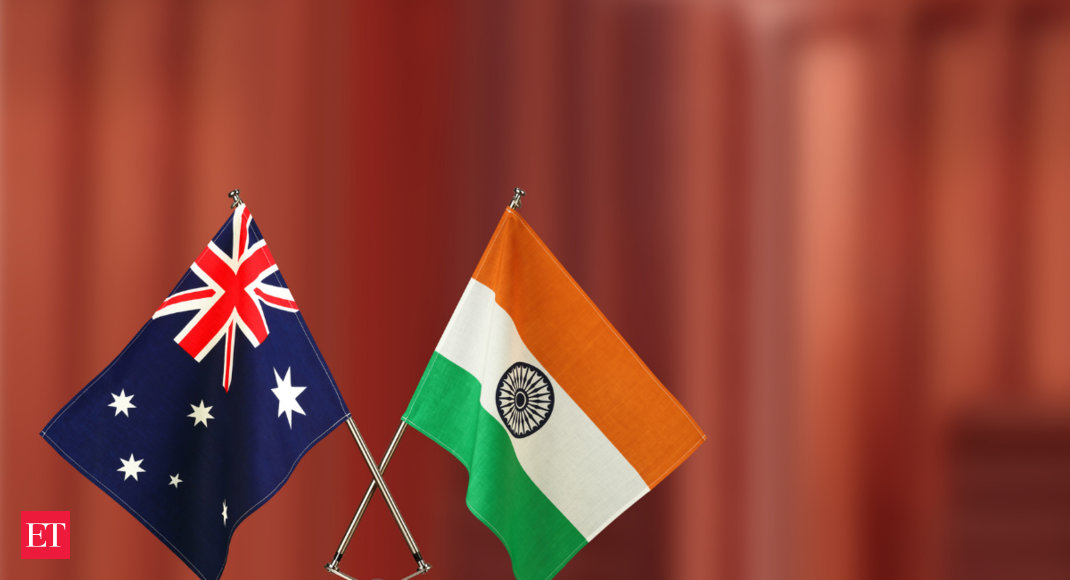NEW DELHI :
Indian whisky makers are making a surprising and spirited bid to break into the British market, the home of Scotch, pushing the amber nectar to the forefront of “sticky issues” in India-UK free trade talks.
While India has agreed to slash the import duty on high-end Australian wines, a similar tariff cut for Scotch whisky may not be easy to negotiate for the Brits. The domestic alcoholic beverage industry is demanding that the UK remove a key requirement for whiskies and spirits to enter the UK market: three-year maturation.
The two countries concluded the third round of talks for the proposed FTA last week, and are exploring the possibility of an interim deal.
The UK has long sought a tariff reduction on its premium spirits including Scotch, which currently stands at a stiff 150%. “We are open to discussing duty reduction in whiskies priced over a certain threshold. However, they also need to reciprocate as far as access to Indian alcoholic beverages are concerned,” a person aware of the development told Mint.
The Indian alcoholic beverage industry is looking for access to the UK market by demanding the withdrawal of the maturation requirement in UK law. The UK has a three-year maturation condition for imports, but India’s hot climate means spirit evaporates during the maturation process, causing losses and increasing costs.
“Whisky is likely to become a sticky point in the India-UK free trade agreement negotiations. The UK asks for a three-year maturation for whiskies. We don’t mature to that extent due to the warmer climate in India. They should create a different category called Indian whisky, which is not ‘aged’ in view of the technical reason,” said Vinod Giri, director general, Confederation of Indian Alcoholic Beverage Companies (CIABC).
“A two-year maturation in India is equivalent to 6-10 years of maturation. There is a 10% loss of spirit every year in India, compared to a 1.5-2% rate of evaporation in Scotland or Tasmania (Australia),” said Giri. This means that Indian alcoholic beverages would lose close to 30% spirit under the 3-year maturation requirement, compared to just 4-6% in Scotland. “That pushes up the cost significantly and doesn’t yield many benefits. India reaches the same level of maturity as Scotland in just 3-6 months. A 30% spirit loss means Indian products can become uncompetitive. It is a non-tariff barrier,” said Giri.
However, UK India Business Council (UKIBC) managing director Kevin Cole said a reduction in tariff on Scotch whisky could prove to be a “win-win” for both the countries.
“The majority of the Scotch Whisky imported into India comes in bulk and not bottles. And a significant part of it goes into making Indian made foreign liquor (IMFL). Therefore if the tariff is reduced from 150% to a lower number Indian whisky companies will have lower costs of ingredients and it could mean a lower cost for Indian consumers,” Cole told Mint.
The UK is India’s seventh-largest export market.
Queries emailed to the ministry of commerce and industry and UK High Commission remained unanswered at press time.
“There can be a minimum threshold level for bulk and product bottled in the country of origin so that imports do not compete with domestic production. The minimum threshold level should be in discussion with all industry bodies,” said Arpita Mukherjee, professor, Indian Council for Research on International Economic Relations (ICRIER).
Mukherjee said non-tariff issues like labelling or adhering to UK food safety standards can be discussed during sanitary and phytosanitary and Technical Barriers to Trade negotiations.
Subscribe to Mint Newsletters * Enter a valid email * Thank you for subscribing to our newsletter.
.







